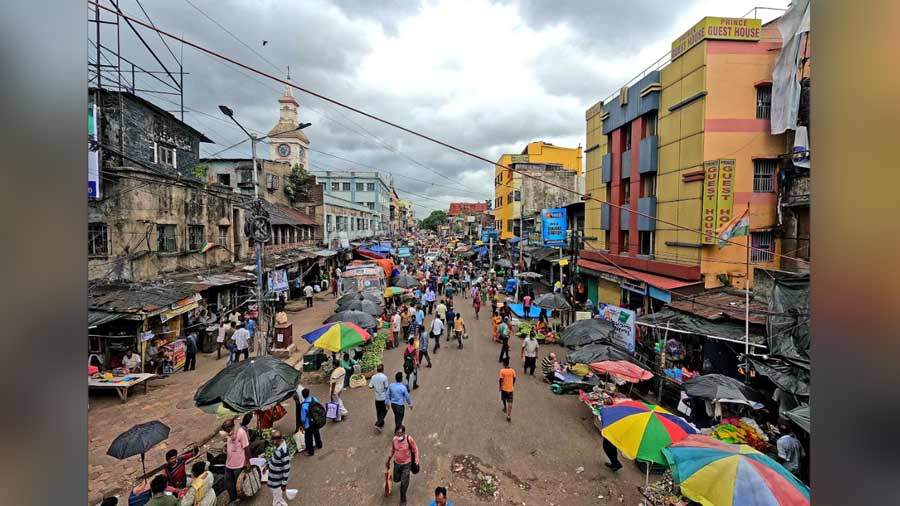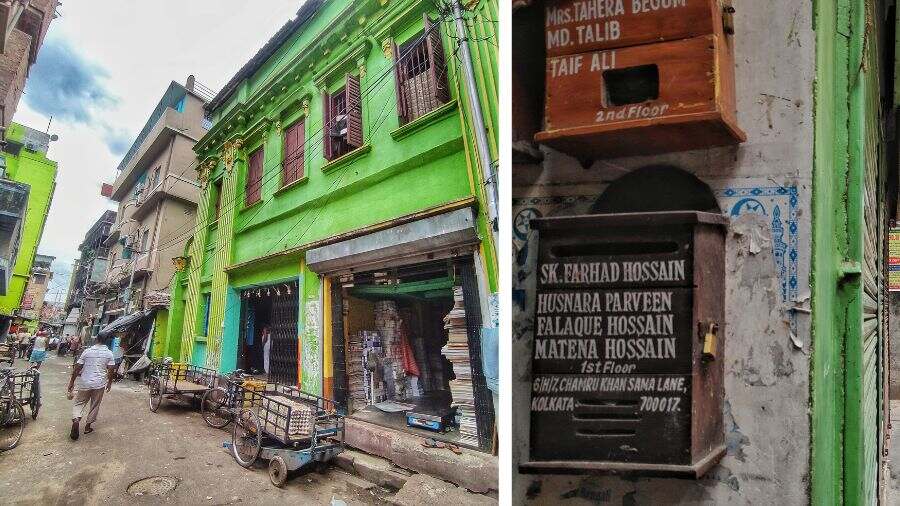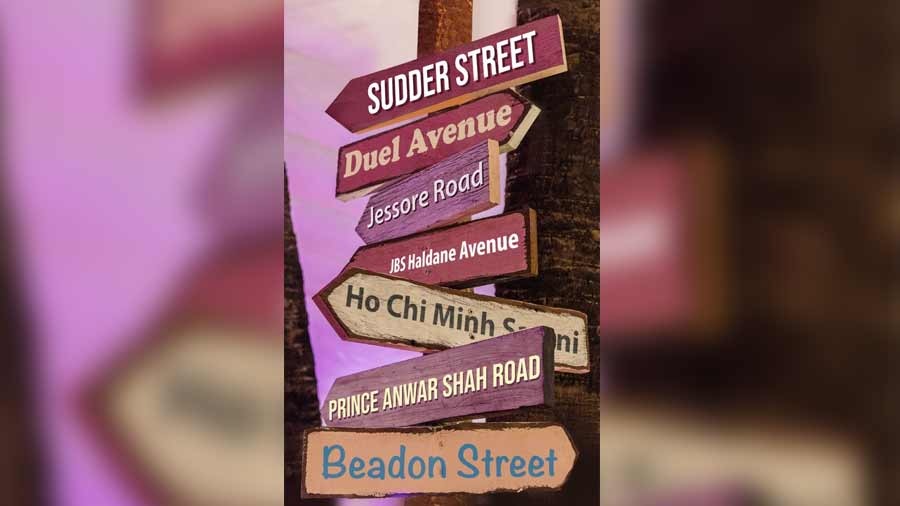Like every old Indian city, Kolkata has streets, nooks and neighbourhoods with unique names that have an interesting story behind them. From streets named after nawabi chefs or khansamas, to the paras named after tailors, there’s many such examples in the city, especially in central and north Kolkata. Among these are Kolkata’s bajars (bazaars), some of which have popularly narrated stories attached to their unique names.
Lalbazar

Post boxes in an old building with the address Lalbazar Street Wikimedia Commons
In the era of Mughal Bengal, Laxmikanta Majumdar, a Kolkata zamindar had a house and temple of Shyam-rai (Shri Krishna) beside the lake in front of Writers’ Building. Later, the house was bought by Job Charnock and turned into an office for the East India Company, but the temple remained in its original place.
Dol Yatra (Holi) was the main festival celebrated at this temple and people from near and far would come to offer vermillion (aabir) to Lord Krishna and play with colours to mark the occasion. The festivities turned the water of the lake red from the coloured powder and it resulted in the waterbody getting the moniker Lal Dighi (red tank or pond).
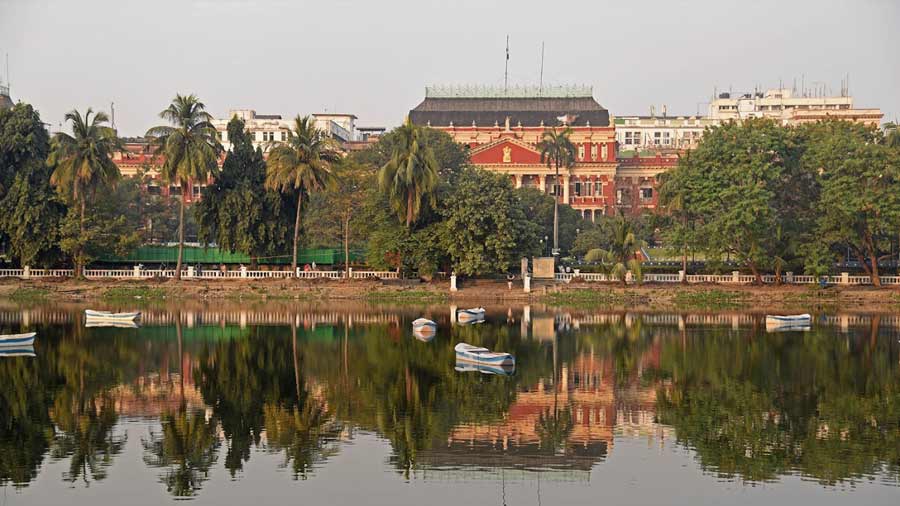
Lal Dighi with Writers’ Building in the background Amit Datta
A fort complex — the original Fort William — was built between the Hooghly river and Lal Dighi, and a market came up on the eastern flank of the tank for the convenience of British residents and upcoming merchant offices. Owing to its location right beside Lal Dighi, this market came to be known as Lalbajar (Lalbazar) — an area that remains a business hub of the city till date.
Baithakkhana bazaar

Baithakkhana bazaar Suvendu Das
Once upon a time, there used to be a huge banyan tree where Sealdah station stands today. It is said the tree was a resting place for the traders who would come to Kolkata to sell their merchandise. Apparently, even Job Charnock used to rest in the shadow of the tree and meet the local merchants there. This spot became a ‘living room’ for the merchants, where they would spend their day and disperse in the evening, and became known as baithak khana. Early British traders even built a tavern called Bread and Cheese at the spot.
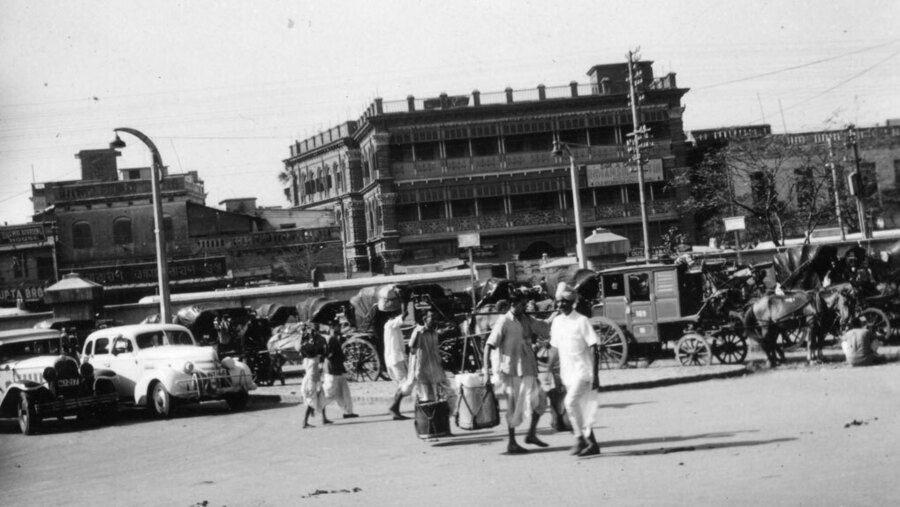
Sealdah station, 1944 Frank Bond; Bond Photograph Library, Digital South Asia Library
In a natural process, a market came up in that area, which then came to be known as Baithakkhana bazaar. The banyan tree has been gone for nearly a century — Sealdah station itself is about 160 years old — however the Baithakkhana bazaar still remains one of the busiest areas of the city.
Bowbazar

Bepin Behari Ganguly Street, also known as Bowbazar street Wikimedia Commons
Hardly a kilometre away from Baithakkhana bazaar is Bowbazar. Many say that Bowbazar earned its name from the word bohu, meaning many, for the various items that were available in stores of the area. However, the history behind the name is a little different. The head of the famous Motilal family of central Kolkata, Bishwanath Motilal, had gifted a bazaar that lay between the areas of Lalbazar and Baithakkhana to his daughter-in-law. The market thus got its name from the Bengali word bou (bahu in Hindi) and came to be known as Bowbazar.
Bagbazar
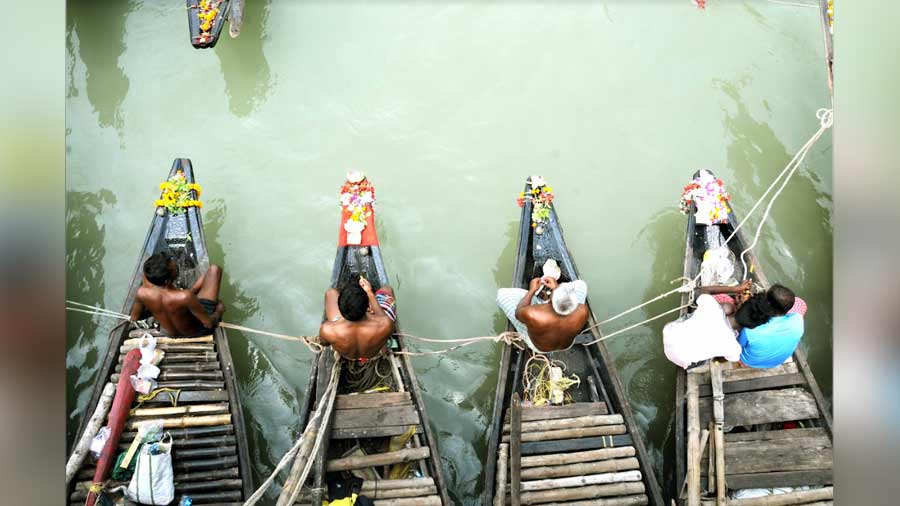
Ganga Puja at Bagbazar Ghat Ashim Paul
The word bagh conjures images of the big cat, but Bagbazar was not named after the animal. Today’s Bagbazar area used to be the address of the garden house of a wealthy British merchant, Captain Charles Perin, until the first half of the 18th century. After his death in 1752, the area was bought by the East India Company and a watchtower was built in 1755. It took Rs 338 to build the tower that kept an eye towards the river Hooghly in the west and the north — presumed possible routes of attack from Nawab Siraj ud-Daulah. Hence, the Bagbazar riverfront became a safe river bank for pilgrims coming to Kalighat.
River transport being the main mode of transport from distant places, people used to often spend a night or two during their pilgrimage to Kalighat. A bazaar came up in this area, predominantly to meet the needs of these pilgrims and acquired the name Bagbazar, named after the bagh or garden of Charles Perin.
Shyambazar
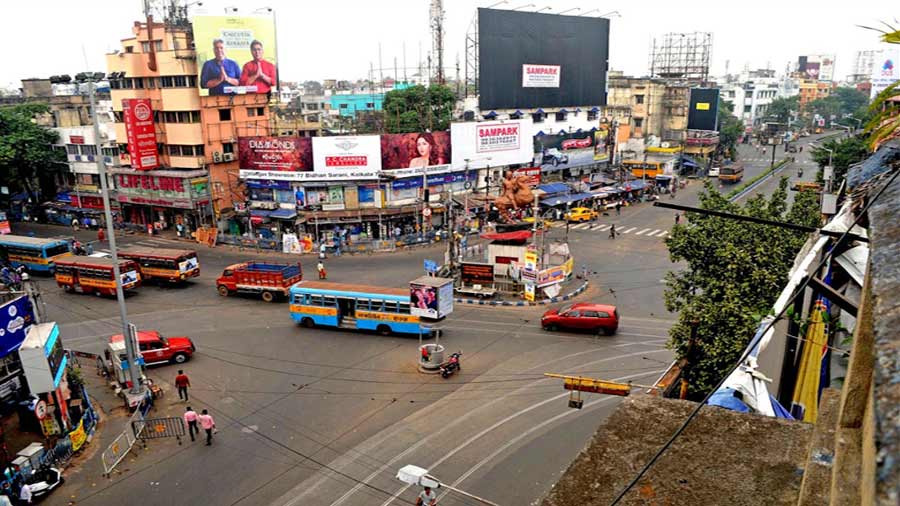
Shyambazar five-point crossing Amit Datta
Like the origin of the name Kolkata, there are disputes about the origin of the names of many places in the city. One such place is Shyambazar. The general perception was that it was named after Shyam Sundar, the household deity of the wealthy zamindar family of Shobharam Basak. However, it was later known that the area belonged to a certain Shyamacharan Mukhopadhyay. The name Shyambazar featured in the first official map of Kolkata made in 1784 by Lt. Col Mark Wood, supports the fact.
Maniktala bazaar
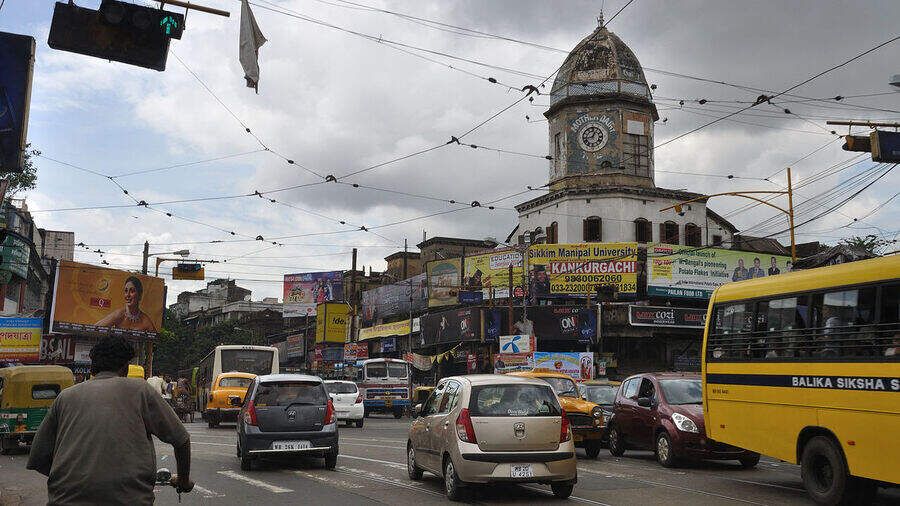
Maniktala crossing Wikimedia Commons
There is a debate surrounding the name of Maniktala bazaar as well. While many say it is named after Manik Pir, some historical accounts credit the name to a man on Nawab Siraj ud-Daulah’s staff. It is believed that after conquering Kolkata, the nawab renamed it Ali Nagar and appointed a certain Manikchand Bose as the caretaker of the city. Manikchand became a very popular person in a short time and later, the place where he lived was named Maniktala in his honour. The fact that Hatibagan got its name from the time that Siraj ud-Daulah supposedly kept his war elephants on an open ground in the area, it is probable that Maniktala was named after Manikchand Bose.
Jagubazar
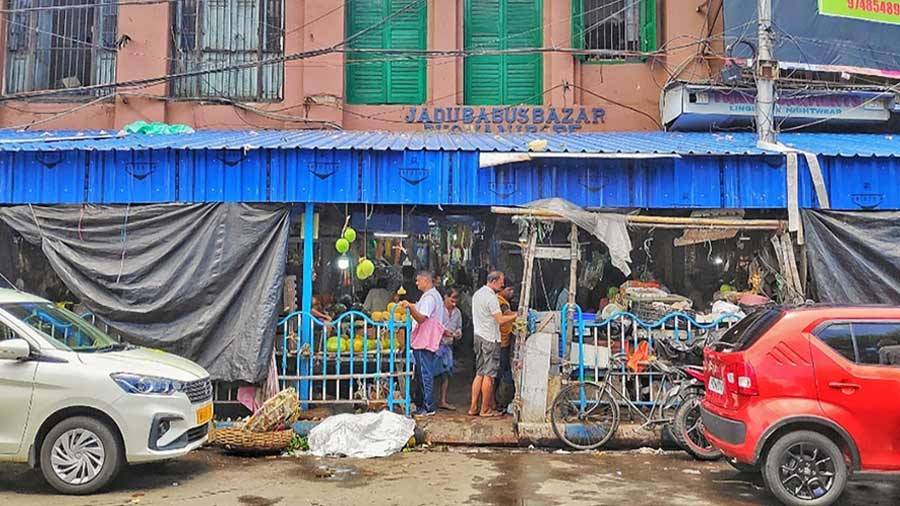
Soumyajit Dey
The story of Jagubazar is more popular, and is a fun anecdote about the city. Bhowanipore area’s Jagu bazaar is known to almost all residents. But not many know that the original name of the market is Jadu Babur Bazaar. Rani Rashmoni had bought a garden house from the British and gifted it to her grandson Jadunath Chowdhury. Babu Jadunath Chowdhury’r bazaar, in the course of time, became Jadu Babur bajar or Jadubabu's Bazar, then Jadu Bazar and ultimately Jagubazar.
